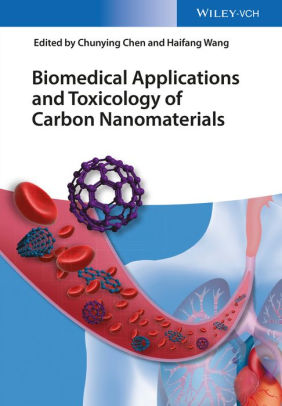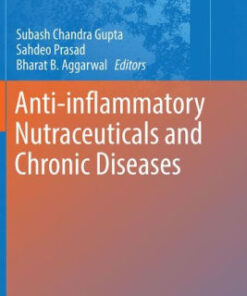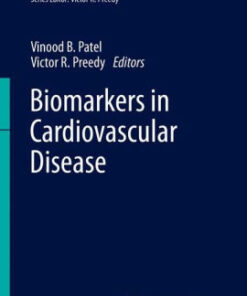(PDF) Biomedical Applications and Toxicology of Carbon Nanomaterials by Chen
$18.00
Download instantly Biomedical Applications and Toxicology of Carbon Nanomaterials by Chunying Chen, Haifang Wang. It is ebook in PDF format.
ISBN-10: 3527338713 ISBN-13: 9783527338719
Preview
This is the PDF eBook version for Biomedical Applications and Toxicology of Carbon Nanomaterials by Chunying Chen, Haifang Wang
Table of Contents
Preface XXV
1 Synthesis, Functionalization, and Characterization 1
Jianxun Xu, Xing Lu, and Baowen Li
1.1 Introduction 1
1.2 Fullerenes and Metallofullerenes 1
1.2.1 Synthesis and Purification 2
1.2.1.1 Synthesis 2
1.2.1.2 Purification 2
1.2.2 Chemical Functionalization 3
1.2.2.1 Carbene Reaction 3
1.2.2.2 Bingel–Hirsch Reaction 4
1.2.2.3 Prato Reaction 5
1.2.2.4 Bis-Silylation 5
1.2.2.5 Diels–Alder Reaction and Benzyne Reaction 5
1.2.2.6 Singly Bonded Addition 6
1.2.2.7 Supramolecular Complexes of EMFs 6
1.2.3 Characterization 6
1.2.3.1 Synchrotron Radiation Powder Diffraction (SRPD)/Rietveld/MEM 6
1.2.3.2 Nuclear Magnetic Resonance (NMR) Spectroscopy 7
1.2.3.3 Theoretical Calculation 7
1.2.3.4 Single-Crystal X-ray Diffraction Crystallography 7
1.2.3.5 Others 8
1.2.4 Questions and Future Directions 8
1.3 Carbon Nanotubes 8
1.3.1 Synthesis 9
1.3.1.1 Arc Discharge Method 9
1.3.1.2 Laser Ablation Method 10
1.3.1.3 CVD Method 10
1.3.1.4 Synthesis of CNTs with a Defined Structure 10
1.3.2 Functionalization 11
1.3.2.1 Covalent Chemical Reactions 11
1.3.2.2 Noncovalent Modifications 11
1.3.3 Characterization 12
1.3.3.1 Microscopic Characterizations 12
1.3.3.2 Spectroscopic Characterizations 13
1.3.4 Questions and Future Directions 13
1.4 Graphene 14
1.4.1 Synthesis and Characterization 14
1.4.2 Functionalization of Graphene and Graphene Oxide 17
1.4.3 Prospects and Challenges 18
1.5 Summary and Outlook 20
References 21
2 Identification and Detection of Carbon Nanomaterials in Biological Systems 29
Haifang Wang, Zheng-Mei Song, Yi-Fan Yang, Aoneng Cao, and Yuanfang Liu
2.1 Introduction 29
2.2 Available Techniques for Qualitative and Quantitative Determination 30
2.2.1 Optical Microscopic Observation 30
2.2.2 Electron Microscopic (EM) Observation 31
2.2.3 Raman Spectroscopic Measurement 33
2.2.4 Fluorescence Analysis 36
2.2.4.1 Intrinsic Fluorescence Analysis 36
2.2.4.2 Labeled Fluorescence Analysis 39
2.2.5 Isotope Labeling Method 39
2.2.5.1 Radioisotope Labeling 40
2.2.5.2 Stable Isotope Labeling 43
2.2.5.3 Tips for Isotopic Labeling 43
2.2.6 Chromatographic Technique 45
2.2.7 Flow Cytometry Method 45
2.2.8 Other Methods 46
2.3 Summary and Outlook 47
Acknowledgments 48
References 48
3 Biodistribution and Pharmacokinetics of Carbon Nanomaterials In Vivo 55
Sheng-Tao Yang, Xiaoyang Liu, and Jingru Xie
3.1 Introduction 55
3.2 Amorphous Carbon Nanoparticles 55
3.2.1 Ultrafine Carbon Particles 56
3.2.2 Carbon Nanoparticles 58
3.2.3 Carbon Dots 59
3.3 sp2 Carbon Nanomaterials 62
3.3.1 Fullerene 62
3.3.2 Carbon Nanotubes 69
3.3.3 Carbon Nanohorns 77
3.3.4 Graphene 80
3.3.5 Graphene Quantum Dots 85
3.4 Nanodiamonds 87
3.5 Summary and Outlook 89
Acknowledgments 90
References 90
4 Interaction of Carbon Nanomaterials and Components in Biological Systems 97
Jian Tian and Cuicui Ge
4.1 Introduction 97
4.2 Factors Affecting Interaction 99
4.2.1 Characteristics of Carbon Nanomaterials 99
4.2.1.1 Size and Layer 99
4.2.1.2 Surface Modification and Functionalization 100
4.2.2 Biological Microenvironment 102
4.2.2.1 pH 103
4.2.2.2 Ionic Strength 104
4.2.2.3 Weak Interactions 104
4.2.2.4 Cell Selectivity 105
4.3 Interaction of Carbon Nanomaterials with Various Components in Biological Systems 107
4.3.1 Characterization and Methodology of Interaction of Carbon Nanomaterials with Components in the Biological System 107
4.3.2 Carbon Nanomaterial–Phospholipid Interaction 108
4.3.3 Carbon Nanomaterial–Protein Interaction 111
4.3.4 Carbon Nanomaterial–DNA Interaction 115
4.3.5 Carbon Nanomaterial–Cell Interaction 119
4.4 Conclusion and Perspectives 120
References 122
5 Biomedical Applications of Carbon Nanomaterials 131
Liangzhu Feng and Zhuang Liu
5.1 Introduction 131
5.2 Biomedical Applications of Fullerenes 132
5.2.1 Fullerenes as Antioxidants and Neuroprotective Agents 132
5.2.2 Fullerenes as Antitumor Agents 134
5.2.3 Metallofullerenes as MRI Contrast Agent 136
5.2.4 Fullerenes for Other Applications 136
5.3 Biomedical Applications of Carbon Nanotubes 137
5.3.1 Carbon Nanotubes for Drug Delivery 138
5.3.1.1 Carbon Nanotubes for the Delivery of Small Drug Molecules 139
5.3.1.2 Carbon Nanotubes for the Delivery of Biomacromolecules 141
5.3.2 Carbon Nanotubes for Photothermal and Combined Therapies of Tumors 142
5.3.2.1 Carbon Nanotubes for PhotothermalTherapy of Tumors 142
5.3.2.2 Carbon Nanotubes for CombinedTherapies of Tumors 143
5.3.3 Carbon Nanotubes for Bioimaging 144
5.3.3.1 Carbon Nanotubes for Fluorescence Imaging 144
5.3.3.2 Carbon Nanotubes for Raman Imaging 145
5.3.3.3 Carbon Nanotubes for Photoacoustic Imaging 145
5.3.3.4 Carbon Nanotubes for Other Bioimaging Modalities 145
5.3.4 Carbon Nanotubes for Other Biomedical Applications 146
5.4 Biomedical Applications of Graphene 146
5.4.1 Graphene for Drug Delivery 147
5.4.1.1 Graphene for the Delivery of Small Drug Molecules 148
5.4.1.2 Graphene for the Delivery of Biomacromolecules 148
5.4.2 Graphene for Photothermal and CombinedTherapies of Tumors 151
5.4.3 Graphene for Bioimaging 152
5.4.4 Graphene for Other Biomedical Applications 153
5.5 Conclusion and Perspectives 153
Acknowledgments 154
References 155
6 Pulmonary Effects of Carbon Nanomaterials 163
Liying Wang, Donna C. Davidson, Vincent Castranova, and Yon Rojanasakul
6.1 Introduction 163
6.2 Physicochemical Properties of Carbon Nanomaterials 164
6.2.1 Types of Carbon Nanomaterials 165
6.2.2 Effects of Size 165
6.2.3 Effects of Agglomeration State 166
6.2.4 Aspect Ratio Considerations 168
6.2.5 Surface Modifications 168
6.3 Fate of Pulmonary Exposed Carbon Nanoparticles (Deposition, Distribution, Translocation, and Clearance) 169
6.3.1 Deposition and Distribution of Carbon Nanoparticles in the Lung 169
6.3.2 Translocation of Carbon Nanoparticles 172
6.3.3 Clearance of Carbon Nanomaterials from the Lungs 175
6.4 Carbon Nanomaterial–Induced Lung Responses 176
6.4.1 Key/Specific Target Lung Cell Types of Pulmonary-Exposed Carbon Nanoparticles 176
6.4.2 Lung Inflammation 178
6.4.3 Immune Response 179
6.4.4 Fibrosis 180
6.4.5 Genotoxicity 181
6.4.6 Cancer 182
6.4.7 Cardiovascular Effects Following Pulmonary Exposure of Carbon Nanomaterials 184
6.5 Summary 184
Disclaimer 184
References 189
7 Cardiovascular and Hemostatic Effects of Carbon Nanomaterials 195
Xiaoyong Deng, Cheng Li, Jiajun Wang, and Pan Chen
7.1 Background 195
7.2 Carbon Nanotubes 195
7.2.1 Hemotoxicity of CNTs 196
7.2.1.1 What Is Hemotoxicity 196
7.2.1.2 Complement System 197
7.2.1.3 Red Blood Cells 199
7.2.1.4 Hemostatic System and Coagulation/Thrombosis/Atheroma 200
7.2.2 Effects on Cardiovascular System 201
7.3 Fullerenes 203
7.3.1 Fullerenes’ Escape from Lungs into Circulation 203
7.3.2 Toxicity of Fullerenes on the Cardiovascular System 204
7.4 Graphene-Related Nanomaterials 205
7.5 Conclusions and Outlook 208
Acknowledgments 208
References 208
8 Modulation of the Immune System by Fullerene and Graphene Derivatives 213
Ligeng Xu and Chunying Chen
8.1 Introduction 213
8.2 The Immunological Effects of Fullerene and Its Derivatives 213
8.2.1 Fullerene Derivatives Can Inhibit Inflammation via Blocking ROS Generation 213
8.2.2 Fullerene Derivatives Promote Immune Responses via Modulating Macrophages and/or Antigen Presenting Cells (APCs) 215
8.3 Immunological Effects of Graphene and Its Derivatives 222
8.3.1 Immunological Effect of Pristine Graphene 225
8.3.2 Immunological Effects of Graphene Oxide and Its Derivatives 227
8.4 Perspectives and Outlook 231
References 234
9 Neuro-, Hepato-, and Nephrotoxicity of Carbon-based Nanomaterials 239
Jia Yao and Yongbin Zhang
9.1 Carbon-based Nanomaterials: Introduction 239
9.2 Neurotoxicity of Carbon-based Nanomaterials 240
9.2.1 Blood–Brain Barrier and BBB Penetration by Carbon-based Nanomaterials 240
9.2.2 Neurotoxicity of Carbon Nanotubes 241
9.2.3 Strategies to Reduce Neurotoxicity of Carbon Nanotubes 243
9.2.4 Neurotoxicity of Other Carbon-based Nanomaterials 244
9.3 Hepato and Nephrotoxicity of Carbon-based Nanomaterials 245
9.3.1 Carbon Nanotube Biodistribution in the Liver and Kidney 245
9.3.2 Biodistribution of Other Carbon Nanomaterials 248
9.3.3 Hepatotoxicity of Carbon Nanotubes 251
9.3.4 Carbon Nanotube Nephrotoxicity/Renal Toxicity 254
9.3.5 Hepatotoxicity and Nephrotoxicity of Other Types of Carbon-based Nanomaterials 254
9.4 Points of Consideration for Toxicity Evaluation of Carbon-based Nanomaterials 257
9.5 Summary 259
Acknowledgments 259
References 259
10 Genotoxicity and Carcinogenic Potential of Carbon Nanomaterials 267
Todd A. Stueckle, Linda Sargent, Yon Rojanasakul, and Liying Wang
10.1 Introduction 267
10.1.1 Engineered Nanomaterials and Long-Term Disease Risk: An Introduction 269
10.1.2 Carcinogenesis: A Multistep Process 270
10.1.2.1 Genotoxicity and Initiation 271
10.1.2.2 Promotion 272
10.1.2.3 Progression 274
10.1.3 Current Knowledge and Challenges in Carcinogenesis Studies 274
10.2 Carbon Nanomaterials: Genotoxicity and Carcinogenic Potential 275
10.2.1 Physicochemical Properties of ECNMs 275
10.2.2 Ultrafine Carbon Black 276
10.2.2.1 In Vivo Studies 277
10.2.2.2 In Vitro Studies 278
10.2.3 Carbon Nanotubes 278
10.2.3.1 In Vivo Studies 279
10.2.3.2 In Vitro Studies 291
10.2.4 Fullerenes and Derivatives 296
10.2.4.1 In Vivo Studies 297
10.2.4.2 In Vitro Studies 299
10.2.5 Graphene and Graphene Oxide 300
10.2.5.1 In Vivo Studies 302
10.2.5.2 In Vitro Studies 304
10.2.6 Carbon Nanofibers and Other Particles 307
10.2.6.1 In Vivo Studies 307
10.2.6.2 In Vitro Studies 308
10.3 Future Challenges in Carbon Nanomaterial Carcinogenesis Risk Assessment 308
10.3.1 Exposure Characterization and Fate 308
10.3.2 Dosimetry 309
10.3.3 Model Choice 310
10.3.4 Systematic Evaluation of Genotoxicity 311
10.3.5 Role of ROS and Inflammation 311
10.4 Assessment of ECNM-Induced Genotoxicity and Carcinogenesis 312
10.4.1 Recommendations for Screening ENMs for Carcinogenic Potential 312
10.4.2 Systematic Screening Paradigm and Workflow for ENM Carcinogenicity Risk Assessment 314
10.5 Concluding Remarks 316
Acknowledgments 316
Disclaimer 316
References 317
11 Effect on Reproductive System of Carbon Nanomaterials 333
Ying Liu and Chunying Chen
11.1 Introduction 333
11.2 Effects of Carbon Nanomaterials on the Reproductive System 334
11.2.1 Carbon Nanotubes 335
11.2.2 Fullerene Derivatives 340
11.2.3 Carbon Black Nanoparticles 340
11.3 Insights into the Molecular Mechanisms 342
11.3.1 Potential Toxicity to the Female Reproductive System 342
11.3.2 Potential Toxicity to Male Reproduction of Carbon Nanomaterials 343
11.3.3 Potential Toxicity to Offspring of Carbon Nanomaterials 345
11.3.4 Impact on the Endocrine Organs and Hormone Biosynthesis/Metabolism 346
11.3.5 Others 348
11.4 Conclusion and Perspectives 348
Acknowledgments 352
References 352
12 Immunological Responses Induced by Carbon Nanotubes Exposed to Skin and Gastric and Intestinal System 357
Haiyan Xu, JieMeng, Qiang Ma, and Xiaojin Li
12.1 Introduction 357
12.2 Biological Effects of CNTs by Dermal Exposure 358
12.2.1 In Vitro Assessment in Dermal-Related Cell Lines 358
12.2.2 In Vivo Studies on the Responses Elicited by Skin Exposed with CNTs 361
12.3 Immunological Reactions Elicited by Subcutaneous Administration of MWCNTs 362
12.3.1 Preparation and Characterization of Multiwalled Carbon Nanotubes for Uses in Studies 362
12.3.2 Distribution of Subcutaneously Injected Carbon Nanotubes 363
12.3.3 Immunological Responses Induced by Subcutaneously Injected MWCNTs 369
12.3.3.1 Macrophages Responses Exerted by MWCNTs 370
12.3.3.2 MWCNTs Attract Naïve Monocyte Macrophages Through Activating Macrophages in the Subcutis 373
12.3.3.3 Subcutaneously Injected MWCNTs Induce Complement Activation 375
12.3.3.4 Subcutaneously Injected MWCNTs Elevate Pro-inflammatory Cytokines in the Blood 376
12.4 Immunological Responses Induced by Subcutaneous Administration of MWCNTs in Tumor-Bearing Mice 377
12.4.1 MWCNTs Induce Systematic Immune Responses in Tumor-Bearing Mice 378
12.4.2 MWCNTs Upregulate Multiple Pro-inflammatory Cytokines in the Blood 378
12.4.3 MWCMTs Mediate Cytotoxicity of Lymphocytes 379
12.4.4 MWCNTs Induce Complement Activation 380
12.4.5 MWCNTs Attract Monocyte-Macrophages to Affect the Microenvironment of Tumor Mass 380
12.5 CNTs as Antigen Delivery System to Enhance Immune Responses Against Tumors 383
12.6 Immunological Responses of Gastric and Intestinal Systems Exposed to Carbon Nanotubes 386
References 389
13 Modulation of Immune System by Carbon Nanotubes 397
Marit Ilves and Harri Alenius
13.1 Immune System 397
13.1.1 Innate Immunity Cells and Their Main Functions 398
13.1.2 Adaptive Immunity Cells andTheir Main Functions 399
13.2 Carbon Nanotubes (CNTs) and Innate Immunity 400
13.2.1 Complement Activation 401
13.2.2 Macrophages 402
13.2.3 Activation of Inflammasome Complex and IL-1ß Secretion 405
13.2.4 Neutrophils 406
13.2.5 Innate Lymphoid Cells (ILCs) 408
13.2.6 Dendritic Cells 408
13.3 CNTs and Adaptive Immunity 409
13.3.1 The Effects of CNTs on Vaccine Delivery and Immunotherapy 409
13.3.2 Utilization of CNT Scaffolds in the Expanding and Modulation of Immune Cells 411
13.3.3 Immunosuppressive Effects of CNTs 413
13.4 The Effect of CNTs in Allergy and Asthma 414
13.4.1 Allergic Reactions and Their Immunological Mechanisms 414
13.4.2 Asthma 415
13.4.3 Allergic Pulmonary Inflammation Induced by Airway Exposure to CNTs 417
13.4.4 Modulation of Allergen-Induced Airway Inflammation by Exposure to CNTs 418
13.4.5 CNT in the Context of Mast Cells and Eosinophils 420
13.4.6 Role of IL-33 Pathway in CNT-Induced Allergic Responses 420
13.5 Conclusions and Future Prospects 422
References 424
14 Carbon Dots: Synthesis, Bioimaging, and Biosafety Assessment 429
Jie Wang and Yao He
14.1 Introduction 429
14.1.1 Synthesis and Fabrication of C-dots 429
14.1.2 Bioimaging of C-dots 431
14.1.3 Biosafety Assessment of C-dots 432
14.2 Synthetic Strategies 433
14.2.1 Microwave-Assisted Methods 433
14.2.2 Hydrothermal Carbonization 434
14.2.3 Electrochemical Synthesis 437
14.2.4 Chemical Oxidation 439
14.2.5 Ultrosonication 442
14.2.6 Plasma Treatment 444
14.2.7 Laser Ablation Methods 445
14.2.8 Supported Methods 446
14.2.9 Thermal Routes 448
14.3 C-Dots-based Fluorescent Probes for Bioimaging Applications 450
14.3.1 Fluorescent Probes for Bioimaging Applications 450
14.3.2 In Vitro Imaging 451
14.3.3 In Vivo Imaging 456
14.3.4 Conclusion 462
14.4 Toxicity Assessment 462
14.4.1 In Vitro Toxicity Assessment 463
14.4.2 In Vivo Toxicity Assessment 469
14.4.3 Conclusion 475
14.5 Perspectives 477
14.5.1 Unequivocal PL Mechanism 477
14.5.2 Expanding the Spectral Coverage 478
14.5.3 QY Improvement 478
14.5.4 Bioimaging 478
14.5.5 Toxicity Assessment 479
References 479
15 Transport in the Environment and Ecotoxicity of Carbon Nanomaterials 487
Yingying Xu and Chunying Chen
15.1 Introduction 487
15.2 Transport of Carbon Nanomaterials in the Environment 488
15.2.1 Entry of Carbon Nanomaterials into the Environment 488
15.2.2 Fate and Transformation in the Environment 488
15.2.2.1 Oxidation 488
15.2.2.2 Photochemical Transformation 490
15.2.2.3 Dissolution and Precipitation 491
15.2.2.4 Adsorption 492
15.2.2.5 Biodegradation 493
15.3 Ecotoxicity of Fullerene 494
15.3.1 Effect of Fullerene on Microorganisms 494
15.3.2 Effect of Fullerene on Animals 495
15.3.2.1 Effect of Fullerene on Invertebrates 495
15.3.2.2 Effect of Fullerene on Vertebrates 496
15.3.3 Effect of Fullerene on Plants 496
15.3.3.1 Effect of Fullerene on Algae 496
15.3.3.2 Effect of Fullerene on Higher Plants 497
15.4 Ecotoxicity of Carbon Nanotubes (CNTs) 498
15.4.1 Effect of CNTs on Microorganisms 498
15.4.2 Effect of CNTs on Animals 499
15.4.2.1 Effect of CNTs on Invertebrates 499
15.4.2.2 Effect of CNTs on Vertebrates 501
15.4.3 Effect of CNTs on Plants 502
15.4.3.1 Effect of CNTs on Algae 502
15.4.3.2 Effect of CNTs on Higher Plants 503
15.5 Ecotoxicity of Graphene 504
15.6 Conclusion and Perspectives 506
Acknowledgments 506
References 506
16 Exposure Scenarios in the Workplace and Risk Assessment of Carbon Nanomaterials 515
Rui Chen and Chunying Chen
16.1 Introduction 515
16.1.1 Background 515
16.1.2 Exposure Routes and Exposure Scenarios 515
16.1.3 Exposure Metrics 516
16.1.4 Occupation Exposure Limit for Carbon Nanomaterials 516
16.1.5 Strategy for Exposure Assessment of Carbon Nanomaterials 517
16.2 Potential Exposure in theWorkplace 519
16.2.1 Carbon Nanotubes 519
16.2.2 Fullerenes, Metallofullerenes, and Graphenes 525
16.3 Exposure Risk Assessment and Engineering Control 527
16.3.1 Risk Assessment Strategy on Carbon Nanomaterials 527
16.3.2 Inhalation Exposure Assessment Method 529
16.3.3 Exposure Controls 530
16.4 Summary and Outlook 531
Acknowledgments 531
References 531
Index 535




